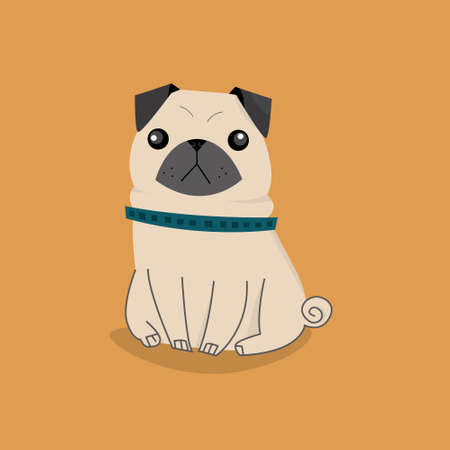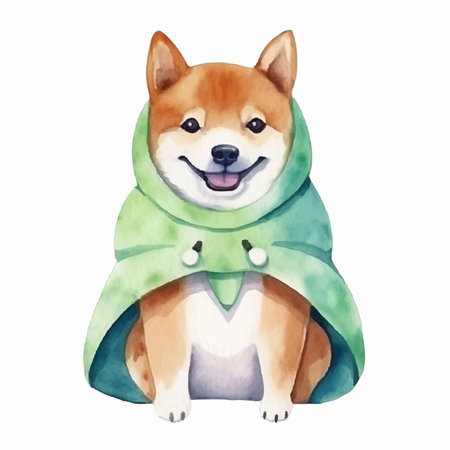1. Choosing the Right Equipment for Your Dog
Selecting the right harness, collar, or leash for your dog is essential for their safety and comfort. The best choice depends on your dog’s size, breed, and activity level. Here’s a breakdown of the different options available and how to choose the right one.
Harnesses: Types and Benefits
A harness can be a great alternative to a collar, especially for dogs that pull or have respiratory issues. Here are some common types:
| Type of Harness | Best For | Key Features |
|---|---|---|
| Back-Clip Harness | Small dogs, well-trained walkers | Leash attaches on the back; provides comfort and reduces pressure on the neck. |
| Front-Clip Harness | Puppies, dogs that pull | Leash attaches in front; helps redirect pulling behavior. |
| Dual-Clip Harness | Larger breeds, training purposes | Offers both front and back attachment points for versatility. |
| No-Pull Harness | Persistent pullers, strong dogs | Tightens slightly when pulling to discourage the behavior. |
Collars: Finding the Right Fit
A collar is useful for everyday wear and identification tags. Choosing the right one ensures your dog’s comfort and safety.
Buckle vs. Martingale Collars
- Buckle Collar: A standard option with adjustable holes or a quick-release buckle. Ideal for everyday use.
- Martingale Collar: Designed for dogs with narrow heads (like Greyhounds), it tightens slightly when pulled but prevents choking.
Sizing Tips for Collars
The collar should fit snugly but not too tight. Use the “two-finger rule”—you should be able to slide two fingers between the collar and your dogs neck comfortably.
Selecting the Right Leash
The right leash depends on your dog’s walking habits and activities.
Main Types of Leashes:
- Standard Leash: Typically 4 to 6 feet long, perfect for daily walks and training.
- Retractable Leash: Allows more freedom but requires careful control to prevent accidents.
- Hands-Free Leash: Great for jogging or hiking, often worn around the waist.
- Dual Dog Leash: Helps manage two dogs at once without tangling.
Selecting the right equipment will help ensure a safe and enjoyable experience for both you and your furry friend!
2. Measuring Your Dog for a Proper Fit
Ensuring your dog’s harness, collar, or leash fits correctly starts with accurate measurements. A well-fitted accessory keeps your pup comfortable and secure while preventing chafing, slipping, or restricted movement. Follow these steps to measure your dog properly.
How to Measure Your Dog
1. Measuring the Neck
To find the right collar size, wrap a soft measuring tape around the thickest part of your dog’s neck, typically right above the shoulders. Make sure it’s snug but not tight—allowing you to fit two fingers between the tape and your dog’s neck ensures comfort.
2. Measuring the Chest (Girth)
The chest measurement is crucial for harness sizing. Wrap the measuring tape around the widest part of your dog’s ribcage, usually just behind their front legs. Again, leave enough room for two fingers to ensure it’s not too tight.
3. Measuring the Body Length (if needed)
Some harnesses require a body length measurement, especially those that cover more of your dogs torso. Measure from the base of the neck to the base of the tail to get an accurate fit.
Size Guide for Collars and Harnesses
Use this general guide to match your dog’s measurements with the appropriate collar or harness size:
| Size | Neck Measurement | Chest Measurement | Best For |
|---|---|---|---|
| X-Small | 8-12 inches | 10-16 inches | Toy breeds (Chihuahua, Yorkie) |
| Small | 10-14 inches | 14-22 inches | Pomeranian, Dachshund |
| Medium | 12-18 inches | 18-28 inches | Cocker Spaniel, Border Collie |
| Large | 16-24 inches | 24-34 inches | Labrador Retriever, Boxer |
| X-Large | 20-30 inches | 28-44 inches | German Shepherd, Great Dane |
Tips for Ensuring a Comfortable Fit
- The Two-Finger Rule: Always ensure that you can slide two fingers between your dog’s skin and the collar or harness.
- Avoid Loose Fitting: A collar or harness that is too loose may slip off or cause chafing due to excess movement.
- Avoid Over-Tightening: If it’s too tight, it could restrict breathing or cause discomfort.
- Ajust as Needed:If your dog is still growing or has long fur that changes with grooming, check and adjust their gear regularly.
A properly measured and fitted harness or collar will keep your dog safe while ensuring they stay comfortable on walks and adventures.

3. Adjusting and Securing the Harness or Collar
Making sure your dogs harness or collar is properly adjusted is essential for their safety and comfort. A poorly fitted harness can lead to slipping, discomfort, or even choking. Follow these step-by-step instructions to ensure a secure and comfortable fit.
Step 1: Place the Harness or Collar on Your Dog
Before adjusting, make sure the harness or collar is positioned correctly on your dog. For a harness, the straps should sit comfortably around the chest and shoulders without twisting. For a collar, it should rest around the neck without being too tight or too loose.
Step 2: Use the Two-Finger Rule
A simple way to check if the fit is correct is by using the two-finger rule:
| Item | Proper Fit |
|---|---|
| Collar | You should be able to slide two fingers between your dogs neck and the collar. |
| Harness | You should be able to fit two fingers under any strap of the harness. |
If you cant fit two fingers, its too tight. If there’s too much space, its too loose.
Step 3: Adjust Straps for a Snug but Comfortable Fit
- Tighten loose straps: If the harness has adjustable buckles or sliders, tighten them so they sit close to your dog’s body without pressing into their skin.
- Avoid over-tightening: The harness should allow free movement without restricting breathing or natural motion.
- Check for slipping: Gently pull on the harness or collar to see if it moves excessively. If it does, adjust accordingly.
Step 4: Secure Buckles and Clips
Once adjusted, fasten all buckles and clips securely. Ensure they are locked in place to prevent accidental loosening during walks.
Step 5: Test with Movement
Let your dog walk around and observe their behavior. If they seem uncomfortable or attempt to remove it, recheck the fit. A well-fitted harness or collar should stay in place without causing irritation.
4. Ensuring Comfort and Mobility
Making sure your dog’s harness, collar, or leash fits properly isn’t just about safety—it’s also about comfort and mobility. A poor fit can cause discomfort, restrict movement, or even lead to injury over time. Here’s how to check if your dog is comfortable and has full range of motion.
Signs of Discomfort
Your dog might not be able to tell you something feels wrong, but their behavior can give you clues. Watch for these signs:
| Sign | What It Means |
|---|---|
| Scratching or biting at the harness/collar | The fit may be too tight or irritating. |
| Reluctance to walk or move | The gear might be restricting their movement. |
| Sores or hair loss around the neck/chest | The material may be rubbing too much. |
| Panting or whining excessively | Your dog could be stressed due to discomfort. |
Checking for Full Range of Motion
A well-fitted harness or collar should allow your dog to move freely without restriction. Try these quick checks:
- The Two-Finger Rule: You should be able to slip two fingers comfortably between the collar/harness and your dogs skin.
- No Shoulder Restriction: When wearing a harness, your dog should be able to move their front legs naturally without any straps digging into their shoulders.
- Smooth Walking: If your dog walks awkwardly or hesitates when moving, the gear might be too tight or poorly positioned.
- Sit Test: Have your dog sit and stand multiple times while wearing the harness—if they struggle, it may need adjustment.
Tweaking for a Better Fit
If you notice any signs of discomfort or restricted movement, make small adjustments:
- Tighten or loosen straps: Adjust until snug but not restrictive.
- Check positioning: The harness should rest properly on the chest and back, not pulling too high or low.
- Try different styles: Some dogs do better with step-in harnesses, while others prefer over-the-head designs.
- Add padding if needed: Soft padding can help prevent rubbing on sensitive areas.
A well-fitted harness, collar, or leash makes walks more enjoyable for both you and your pup. Keep an eye on fit as your dog grows or changes shape over time!
5. Safety Tips for Leash Walking
Leash walking is an essential part of your dogs daily routine, providing exercise, mental stimulation, and bonding time. However, improper leash handling or poorly fitted gear can lead to pulling, escaping, or even injuries. Follow these best practices to ensure a safe and enjoyable walking experience.
Best Practices for Leash Training
Proper leash training helps prevent bad habits like pulling or lunging. Here are some key tips:
- Start with short walks: Gradually increase walk duration as your dog gets comfortable.
- Use positive reinforcement: Reward good behavior with treats or praise.
- Avoid tension on the leash: Keep the leash relaxed to encourage calm walking.
- Stop when pulling occurs: If your dog pulls, stop walking until they return to a loose-leash position.
Proper Leash Handling Techniques
The way you hold and use the leash can impact your dogs behavior and safety. Follow these techniques for better control:
| Technique | Description |
|---|---|
| Hold the leash firmly but not tightly | Avoid wrapping the leash around your wrist to prevent injury if your dog suddenly pulls. |
| Use both hands when needed | If extra control is necessary, use one hand near the clip and the other farther down. |
| Select the right leash length | A 4-6 foot leash offers enough freedom while maintaining control. |
| Avoid retractable leashes in crowded areas | The extended length can cause accidents or loss of control. |
Preventing Common Issues Like Pulling or Escaping
Pulling on the Leash
Puppies and untrained dogs often pull out of excitement. To address this:
- Use a front-clip harness: This redirects pulling behavior safely.
- Practice “stop and go” training: Stop moving when your dog pulls and resume only when they relax.
- Avoid rewarding pulling: Never allow forward movement when your dog pulls—wait for a loose leash instead.
Avoiding Escapes
An improperly fitted harness or collar increases escape risks. Prevent this by:
- Selecting snug but comfortable gear: Ensure collars allow two fingers of space, and harnesses fit securely without gaps.
- : Before every walk, confirm all fasteners are secure.
- : Attach a secondary leash to both the collar and harness for extra security.
A well-fitted harness, collar, and proper leash handling make walks more enjoyable while keeping your dog safe from potential dangers. By following these best practices, you can create a stress-free walking routine that benefits both you and your furry friend.


